Check out our range of stock.
Didn't find what you like?
Send us a message
Found something out of stock?
Send us a message

The Blue Sapphire Guppy are a very nice addition to any tank. There colours really come forth when you put a nice light. They do appear greenish under normal light.
$15.00

Lighting Requirements: 4-6 hours (recommended) Care Level: Low Maintenance Plant Co2: Not required Fertiliser: benefits from liquid fertiliser but not necessary Blue stricta plants are one of the best beginner plants they are a great way to bring some bright green colour and life to your aquarium while still being an easy to grow plant. Perfect background plants as they grow to a tall size with one leaf reaching 10cm in length. Native to tropical South-East Asia, Blue Stricta is popular as a background plant where its large green foliage makes a dense wall of colour. It is not a particularly fussy plant, and provided with a reasonable amount of light will establish itself in an aquarium without much difficulty. We sell these in terracotta pots for easy planting. These are grown in our display tanks and a great addition to any tank
$10.00
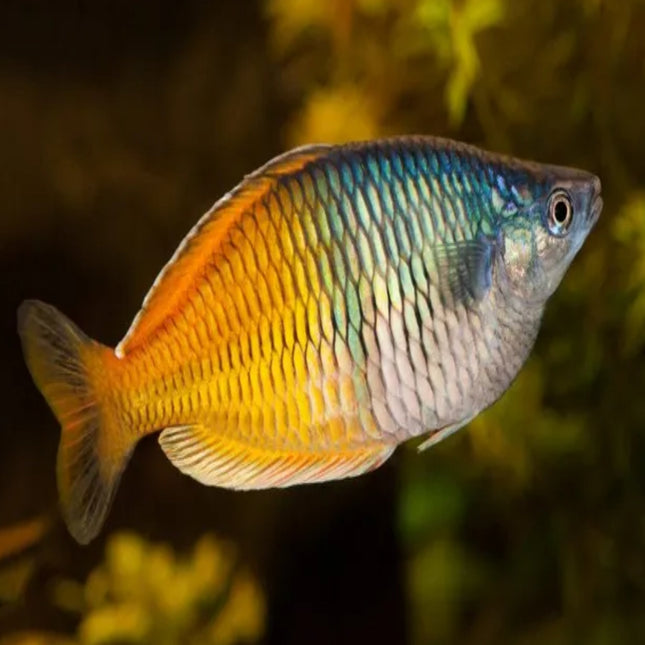
Category Rating Care Level: Easy Temperament: Peaceful Color Form: Blue heads with red rears Lifespan: 5-8 years Size: Up to 4.5 inches Diet: Omnivores Family: Melanotaeniidae Minimum Tank Size: 120L Tank Set-Up: Freshwater with plants and swimming spaces Compatibility: Peaceful community
$50.00
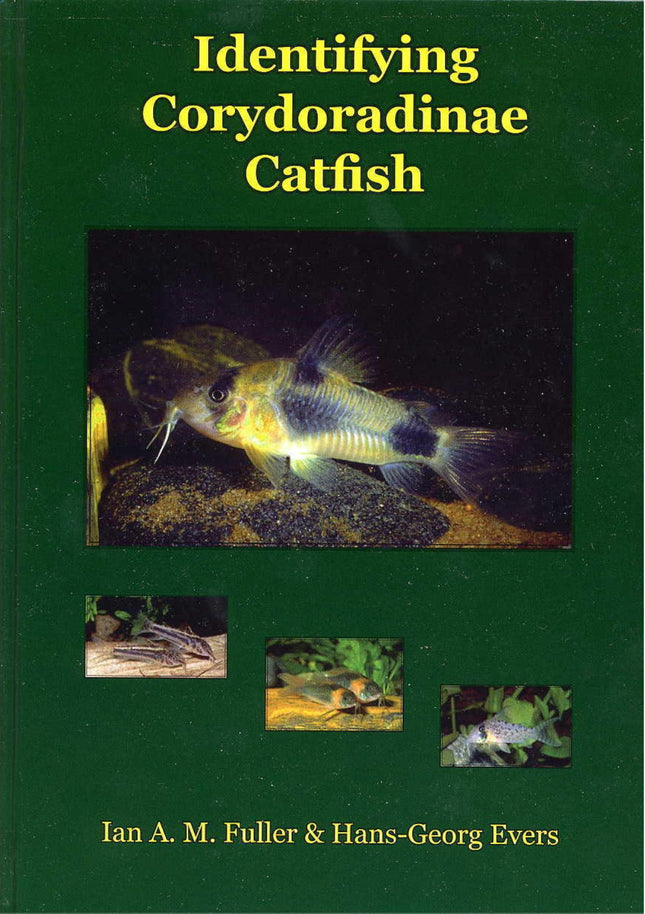
Condition: Like New - personally autographed. Some stains due to age in some of the pages TITLE: Identifying Corydoradinae Catfish AUTHOR: Ian A. M. Fuller AUTHOR: Hans-Georg Evers DESCRIPTION: This book has been produced by Ian A. M. Fuller & Hans-Georg Evers, in an attempt to remove much of the confusion within the hobby today when it comes to the identification of these wonderful little fishes. The book is produced in A5(approx. 6” X 8”) format, hardcover and consists of 384 pages, with 463 color photos. It covers all the known species of Corydoradinae Catfish, Aspidoras, Brochis, Corydoras, Scleromystax and C-Numbers. It gives the type locality, distribution, Etymology, Size and appropriate remarks for each species. A must for the serious “Cory cat” lovers!!
$150.00

Botanicals not only enhance the visuals of your aquarium but also bring a bunch of extra benefits such as: Releasing tannins. Help lower pH. Aid in disease prevention, both bacterial and fungal. Provide an excellent environment for biofilm and microorganisms to grow, which provides microscopic foods for fry, shrimp, apistogrammas other small fish. Enhance a natural behaviour in your fish. The Botanical Packs Include: 3x Indian Almond Leaves 1x Cholla Wood 6x Sweet Gum Balls 3x Halves of Jacaranda Seed Pods Each of our Botanical packs are prepared carefully with all botanicals being boiled and dried out with any seeds being removed as best as we can.
$19.95

Brine shrimp hatchery / Incubator Brine Shrimp Incubator: Brine shrimp is a super food for both fresh and marine fishes, corals and shrimp. This Simple brine shrimp incubator is useful and easy to use for breeding of brine shrimp: The tool to hatch the brine shrimp eggs. Dried and freezing brine shrimp eggs are suitable. The tool is simple, practical, and convenient, there is a hole to connect with the air pump. Incubation Temperature: Shrimp eggs can be hatched in the range of 7-30 degrees Celsius, and the hatching speed is accelerated as the temperature increases. The most suitable temperature for hatching is 25-30℃. Salinity: Different types of brine shrimp eggs have different requirements for salinity during hatching. Before hatching, the eggs are placed in freshwater (available mineral water) and soaked for 30-60 minutes to allow the dehydrated eggs to fully absorb water, and then the eggs are moved into artificial seawater with a salinity of 3% to hatch. It is recommended to use sea salt. Attention: Don't feed too much brine shrimp. If you find that a lot of the brine shrimp at the bottom of the tank has not been eaten, you should clean it in time to avoid causing water corruption. In addition, although the brine shrimp has high nutritional value, long-term large-scale feeding will cause fish imbalance, so everyone needs to use a variety of fish foods to achieve both nutrition and health. Dry or freezing brine shrimp eggs are suitable for growing LIVE brine shrimp for foods for fishes or corals . The tool is simple, practical, and convenient, there is a hole to connect with the air pump.Incubation Temperature: Shrimp eggs can be hatched in the range of 7-30 degrees Celsius, and the hatching speed is accelerated as the temperature increases. The most suitable temperature for hatching is 25-30℃.Salinity: Different types of brine shrimp eggs have different requirements for salinity during hatching. Before hatching, the eggs are placed in freshwater (available mineral water) and soaked for 30-60 minutes to allow the dehydrated eggs to fully absorb water, and then the eggs are moved into artificial seawater with a salinity of 3% to hatch. It is recommended to use sea salt.Attention: Don't feed too much brine shrimp. If you find that a lot of the brine shrimp at the bottom of the tank has not been eaten, you should clean it in time to avoid causing water corruption. In addition, although the brine shrimp has high nutritional value, long-term large-scale feeding will cause fish imbalance, so everyone needs to use a variety of fish foods to achieve both nutrition and health. Specification:Item: IncubatorMain material: Acrylic + ABSColor: Black +transparentCapacity: 380mlSize: Height: 27cm, diameter: 8cm Packing List:1* Incubator set Air pump sold seperately
$29.95

Commonly referred to by the currently synonymised genus Brochis, this sub-clade can be distinguished from other corydoradine species by the fact that they have more than 10 rays in the dorsal fin, whilst all other members of the Corydoradinae have seven rays. Differs from other species of Brochis by its hog-like snout and from B. splendens by a larger number of dorsal fin rays. The dorsal fin can have 15-18 soft rays; although B. multiradiatus usually has 17. Feeding: A fish that likes to dig around for food, but will eat all prepared foods that find their way to the substrate. Live bloodworms or tubifex are especially relished - be careful with the tubifex. It can be difficult to feed carefully and if it starts living in the tank water conditions can quickly deteriorate. This can, at least in part, be controlled by offering tubifex in a shallow ceramic bowl. Furniture: Open spaces of substrate and rock or wood refuges slightly elevated to provide the shade these fish like to rest under in rare moments of inactivity. This species will gleefully uproot plants at the first opportunity, use plant pots or other methods of fixing plants in place Compatibility: An ideal community tank resident, keep in shoals. Suggested Tankmates: Can be kept with most fish. More suitable for keeping with loaches than Corydoras as their larger size helps them compete better for food. Boisterous enough to be kept with more dynamic aquaria. Perfect for an Amazon river biotope. Breeding: Reported by no details survive of the account save it is supposed to spawn in a manner similar to Corydoras. Breeding Reports: There is no breeding report.
$0.00

Buce on smooth lava rock is a type of aquarium plant that is characterized by its bright, vibrant colors and unique, smooth texture. It is native to some Southeast Asian countries and is often used in aquariums to create an interesting and eye-catching display. The buce has a unique form and shape, with long, thin leaves that are often frayed at the edges. It has a smooth and glossy surface, which gives it a unique look. The strong colors of this plant can range from bright oranges, yellows, and greens, to deep blues and purples. This plant is also easy to care for, and grows best in low light and warm water.
$39.95

ucephalandra form as "Brownie Purple", however it shows rather brown-green to light reddish tones under water. Its species identity and exact origin are unknown to us; as well as other Bucephalandra, it occurs on rock along fast-flowing rainforest streams on Borneo. The plant is propagated in tissue culture labors (in Vitro). When grown under water, the rhizome is ascending and branched, causing a bushy growth habit. The leaves are about 2-2,5 cm long and 8-9 mm wide, spathulate, with round tip and narrowly wedge-shaped base. They are rosette-like arranged on the stem tips. The plant resembles small forms of Bucephalandra pygmaea. Bucephalandra sp. "Brownie Purple" grows very slowly but has no high demands. It looks best with moderate lighting, good CO2 and nutrient supply and water current. This plant is primarily an epiphyte for the hardscape but can also be fixed to the ground (the rhizome not buried!). It is easily propagated by cuttings of the stem tips and branches. With its bushy look and small, arching leaves, this Bucephalandra is interesting for the planting of the hardscape. It is also small enough to fit into nano aquariums.
$20.00 - $70.00

This neat Bucephalandra form is not yet determined to species. However, its trading name seems to indicate that it originates from the Batang Kawa district in Central Kalimantan. Bucephalandra species occur on rock in the flood zone of fast-flowing rainforest streams on Borneo island. Bucephalandra sp. "Batang Kawa" resembles the "Brownie" forms. It has elliptic leaves with wavy edge. Young leaves and rhizoms show brown-red tones. Generally, Bucephalandras grow very slowly. They cope with little light but look best with moderate lighting, good CO2 and nutrient supply and water current. They are primarily epiphytes for the hardscape that attach themselves to rock and wood, but they can also be fixed to the ground (the rhizome not buried!) where they will take root. The propagation is easy by cuttings of the stem tips and branches. With its bushy look, this Bucephalandra is interesting for the planting of the hardscape. It is also small enough to fit into nano aquariums.
$150.00

The phenotype at the time garnered a lot of interest the world over and the price of the Angels has been astronomically high. In that time, the Angelfish Society used the abbreviation of “bg” Fast forward to 2020 the world over has not yet been bored with such an amazing fish. Naturally the Bulgarian Green Angelfish are scalare in it’s origin however, they have been known to be a tough and robust fish. They are hardy and they are new enough that if you are a person that is really into Angelfish you should consider giving these guys a go. When buying Angels for breeding purposes, it is recommended to buy a group of 6 and let them pair off naturally. Once a pair is formed either move them to a breeding tank or sell off the others. Temperature: 24 – 28°C pH: 6.5 – 7.8 Lifespan: 10+ years Size: 10cm + Diet: Omnivore
$25.00

These Bumblebee Guppies are some of the most beautiful strain of guppies that is new to the market. These guppies were initially brought to Australia in late 2017 and they are becoming a popular fish in Australia. The fish that you will be getting are young and ready to drop within weeks.
$14.95 - $25.00
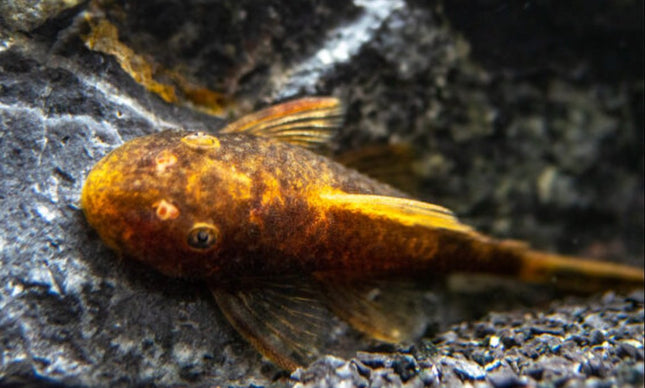
Ancistrus, also known as bushynose or bristlenose catfish, is a genus of nocturnal freshwater fish in the family Loricariidae of order Siluriformes, native to freshwater habitats in South America and Panama. The common Bristlenose is commonly captive bred appears impossible to identify to species primarily due to a lack of original locality information but also because tens of undescribed congeners exist. Ancistrus species show all the typical features of the Loricariidae. This includes a body covered in bony plates and a ventral suckermouth. The feature most commonly associated with the genus are the fleshy tentacles found on the head in adult males; females may possess tentacles along the snout margin but they are smaller and they lack tentacles on the head. Tentacules, tentacles directly associated with odontodes, develop on the pectoral fin spine of the males of some species. Sources: Wikipedia contributors. (2019, October 19). Ancistrus. In Wikipedia, The Free Encyclopedia. Retrieved 02:58, October 19, 2019, from https://en.wikipedia.org/w/index.php?title=Ancistrus&oldid=921971242/nAncistrus. In Planet Catfish. Retrieved October 19, 2019, from https://www.planetcatfish.com/ancistrus_cf_cirrhosus
$12.00 - $15.00

The Calicoe-Lyretail-Guppy is an attractive and hardy aquarium fish that is native to many parts of the world. It is usually recognized by its bright orange-red body with black and yellow fins, and its unique tail that is split into two distinct lobes, resembling a lyre. The Calicoe-Lyretail-Guppy is an active fish that enjoys swimming throughout the aquarium. It can be kept in a variety of community tanks, as it is peaceful and tolerant of other fish. It is an omnivore that feeds on both live and frozen foods, as well as flake and pellet food. It is relatively easy to care for and can live up to five years with proper care.
$10.00

Cameroon moss, also known as Vesicularia sp. Cameroon, is a species of aquatic moss that is often used in aquariums. It is a hardy and low-maintenance plant that is particularly well-suited to aquariums with low to medium lighting levels. Cameroon moss has a distinctive appearance, with small, delicate leaves that grow in a compact and bushy pattern. It typically grows to a height of 3-5 inches (7-13 cm) and can be attached to aquarium decor such as driftwood, rocks, or other plants. It is a slow-growing plant that will require trimming periodically to maintain its shape and prevent it from becoming too dense and blocking out light. In the aquarium, Cameroon moss provides a range of benefits. It helps to improve water quality by absorbing nitrates and other nutrients, and it can provide a hiding place for fish and invertebrates, helping to create a more natural and stress-free environment. The moss is also useful for breeding purposes, as it provides a surface for eggs and fry to attach to. Cameroon moss is an easy-to-care-for plant that does not require CO2 injection or any special fertilization. It prefers water with a neutral to slightly acidic pH and moderate water flow, but can tolerate a wide range of water conditions. It can also survive in low-light environments, but will benefit from moderate lighting levels to maintain its growth and color. Overall, Cameroon moss is a versatile and attractive plant that can be a good choice for aquarium hobbyists of all skill levels. It is a hardy and low-maintenance plant that provides a range of benefits for both fish and invertebrates, making it a popular choice for planted aquariums. Portion Size: 5x5cm when laid out flat which equates to 2-2.5 grams weight (without excess water)
$10.00

The Candy Female Betta is a vibrant, peaceful species of fish that make an ideal addition to any home aquarium. These female betta fish stand out from the crowd with its unique pattern and vivid colours. It is the perfect pet for a peaceful, low-maintenance environment. You can keep them as a single species or within a betta sorority, although as a sorority we do recommend a minimum of 5 and have ample hiding spots within the aquarium.
$60.00 - $70.00
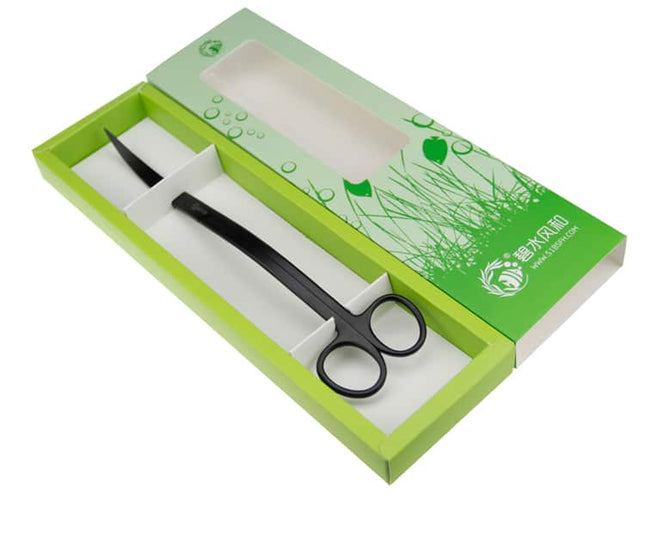
Carbon Planting Scissors Wave is a patented carbon-planting technology that uses special scissors-shaped tools to plant seeds in soil. The scissor-shaped tool is designed to penetrate soil, creating a narrow slit in the soil where a seed can be placed. The tool is then used to form a wave-like pattern in the soil, creating a pocket around the seed so that water and nutrients can reach it easily. This technology is used to help farmers and gardeners plant seeds in areas with difficult soil conditions and can help increase the rate of survival for the planted seed.
$29.00
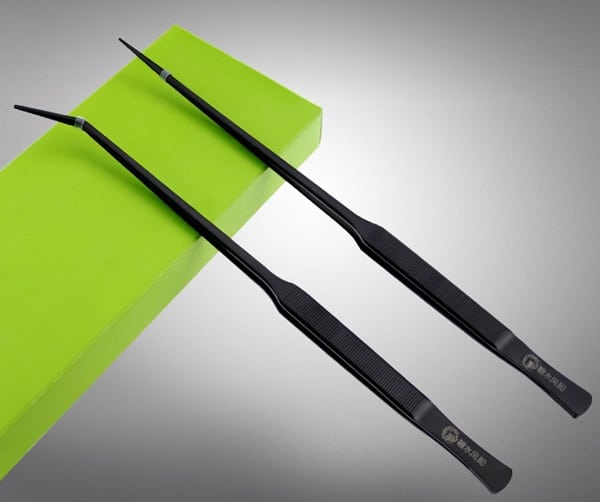
Carbon planting tweezers are a type of tweezers made from carbon steel and designed for planting and harvesting plants, flowers, and herbs. They come in two varieties: straight and curved. The straight tweezers have a straight, thin, sharp edge that is perfect for precision planting and harvesting. The curved tweezers have a curved shape that provides better leverage and control when planting and harvesting, making it easier to work with a variety of plants and herbs. Both types of tweezers are made of a durable carbon steel material that ensures a long lasting, rust-resistant tool that will last for many years.
$29.00
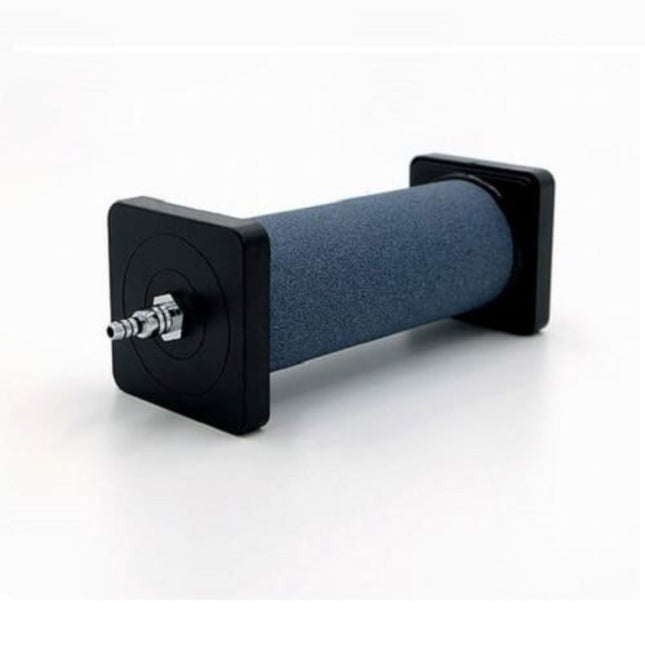
Made by carborundum sintered at high temperature 1500℃. The low flat design of the air stones provides them with a large surface area with which to produce lots of bubbles and aeration for your aquarium. Size: 50mm in diameter, 150mm long and has a dual sized inlet that fits both 4mm and 8mm air hose.
$19.95
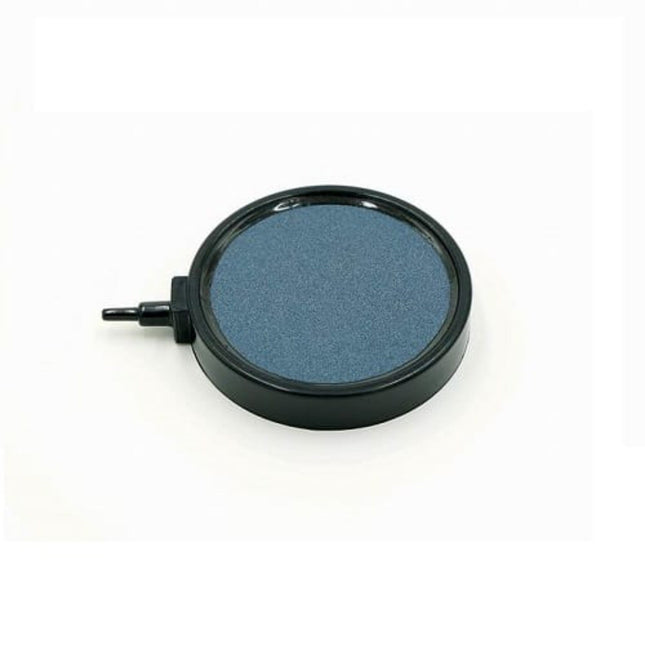
The low flat design of disc air stones provides them with a large surface area with which to produce lots of bubbles and aeration for your aquarium. Size: 108mm in diameter, 18mm high and has a dual sized inlet that fits both 4mm and 8mm air hose.
$19.95
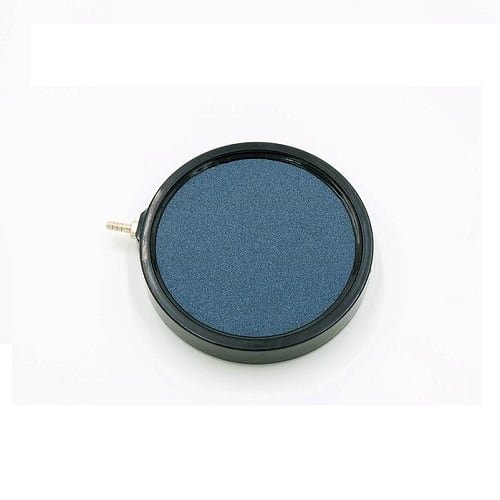
The low flat design of disc air stones provides them with a large surface area with which to produce lots of bubbles and aeration for your aquarium. Size: 132mm in diameter, 20mm high and has a dual sized inlet that fits both 4mm and 8mm air hose.
$17.95

The CWC Algae Eater is the newest addition to Australian aquarium hobby and most likely to become one of the favorites. They thrive on decaying leaves, algae and other detritus materials in ponds/tanks , great little workers/cleaners. They will breed in freshwater, it doesn't require salt/brackish water to breed. Similar to chameleon shrimp, colour will change depending on their environment.
$15.00
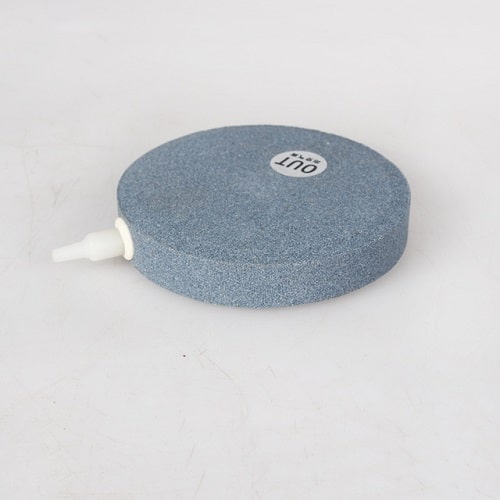
The low flat design of disc air stones provides them with a large surface area with which to produce lots of bubbles and aeration for your aquarium. Size: 100mm in diameter, 18mm high and has a dual sized inlet that fits both 4mm and 8mm air hose.
$14.95
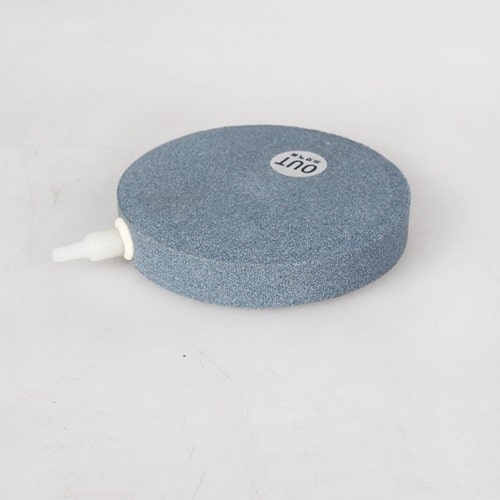
The low flat design of disc air stones provides them with a large surface area with which to produce lots of bubbles and aeration for your aquarium. Size: 150mm in diameter, 18mm high and has a dual sized inlet that fits both 4mm and 8mm air hose.
$18.95

Hardened ceramic shelter. Great for breeders or to provide natural like cover. Perfect for aquariums and terrariums. Special design for the existence of tropical fishes,shrimp.Design a natural living environment for the fish, shrimp to shelter or to generate.Use small thread to bundle the moss on the product constitute a nature living environment.Specially made with ceramic material that possess filtration function for aquarium.Couple with the use of far infrared rays, the appliance is able to provide a lively living environment for all living organism and stimulate the regeneration of purification bacteria. Provides natural like shelter.Great for bottom dwellers.Perfect for breeding. Material Ceramic 100%.Great shelter for plecos,shrimps, small fishes, baby fishes Design a natural living environment for the fish to shelter or to generate. Smooth surface can act as a breeding ground for fish. Specifications Brand Aquarium Supplies Animal Type Fish
$18.95

It provides a safe spot for your shrimp or small fish to rest - For both freshwater and marine aquariums - Handmade top quality ceramic, doesn’t change water quality - Provides a safe spot for your shrimp or small fish to rest and hide - Stack them in your way to build the ideal hide away.
$14.95

The Floating antler-fern, or Ceratopteris pteridoides, is distributed from the American subtropics and tropics from south eastern U.S. to South America and is also reported from Southeast Asia. As a floating aquarium plant, Ceratopteris pteridoides needs above all a plentiful nutrient supply and good lighting. The favourable temperatures lie between about 18 and 30 °C. Nutrient deficiency or imbalance may lead to pale new leaves and poor growth. Under favourable conditions this fern may get large within a quite short period. If the leaf rosettes have become too large for the tank, they can be replaced by some of the many young plantlets that develop on old, also detached leaves. This large, decorative water sprite species looks best in open tanks where is provides shelter for the aquarium inhabitants.
$10.00

The Ceremic holder is great for java, Christmas or Flame Moss
$9.00

Made from Ceremic and great for shrimps and small fish to hide in. We use these for our Khuli Loaches and Shrimp Tanks and it makes them feel at home. Also, being ceremic it allows the ability to put moss over it.
$14.95
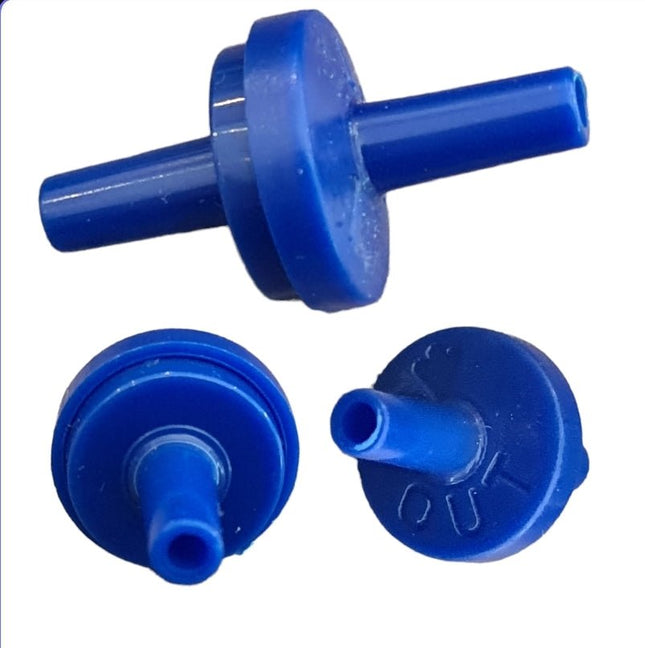
These air valves are simple to use Air goes from the air pump to the in pipe and it goes to the out pipe. These simple tools is necessary as in an event of a power outage water won't travel from your tank to your air pump.
$2.00
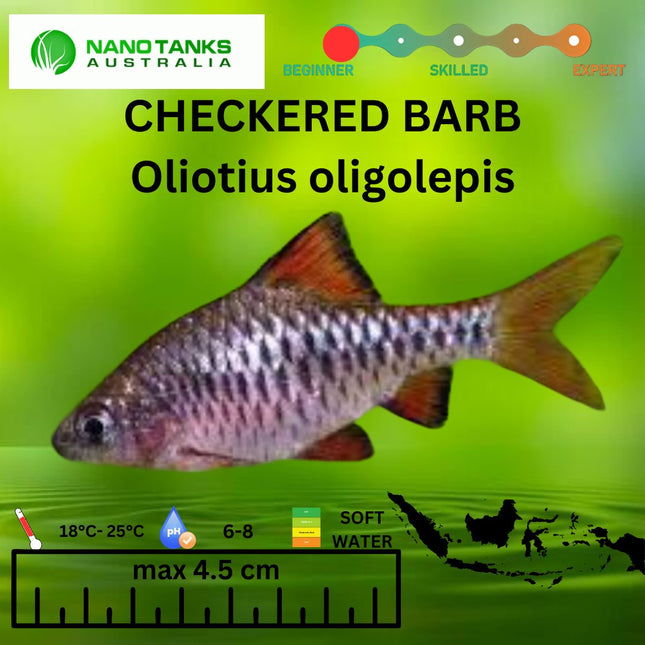
Distribution Apparently endemic to western central Sumatra, Indonesia, but the full extent of its distribution is unclear. The few recent records that exist pertain to lower basins of the Aek Sibundung, Aek Sumuran, and Aek Garoga rivers in Sumatera Utara (North Sumatra) province, with the Batang Gadis drainage and associated National Park possibly representing the northern limit of its range (D. Lumbantobing, pers. comm.). Type locality is ‘Lake Meninju, Sumatra, Indonesia’, which corresponds to the crater lake Danau Maninjau in Sumatera Barat (West Sumatra) province. Maximum Standard Length 40 – 45 mm. Water Conditions Temperature: 18 – 25 °C pH: 5.5 – 7.5 Hardness: 36 – 215 ppm
$8.00
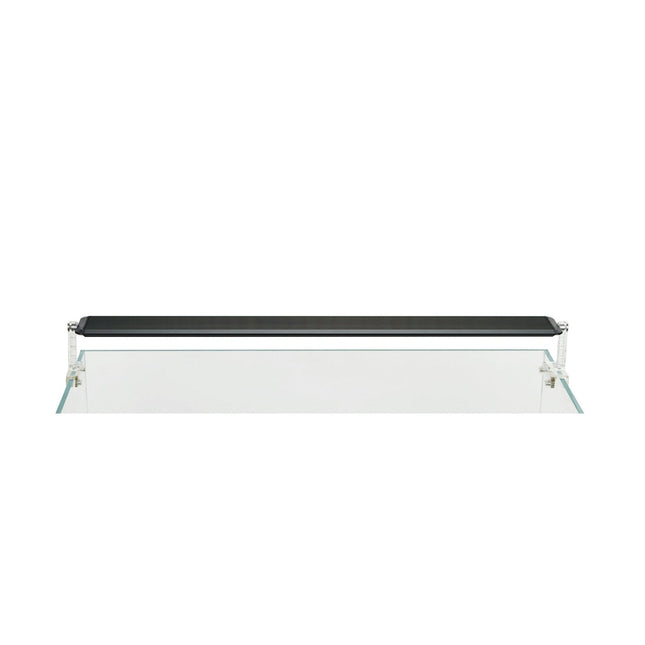
These led lights Chihiros A II series are specially designed for freshwater aquariums densely planted and openly operated. They are full spectrum lamps that cover a spectral range of approx. 400 - 700 nm, with a strong focus on the red and blue range without neglecting the green-yellow rays. Individual LEDs have a temperature color of approximately 8.000 Kelvin and its uniform arrangement in 3 rows throughout the entire lamp guarantees well balanced lighting. LED lamps are equipped with a controller Bluetooth integrated. This distinguishes them from the A series, which requires an external device. The controller allows you to easily set the timer, light intensity, sunrise and sunset simulations through “My Chihiros APP”. Measuring just 6,7 cm wide and 1 cm tall, these aquarium lamps they have an extremely slim design, which makes them very discreet in the room. They are attached to a clear acrylic stand, emphasizing the attractive design of the case, which acts as an indirect heat sink. The function of rotating the A II series lamps gives the caregiver of the Aquarius a wide range of options to illuminate your aquarium individually.
$1.10
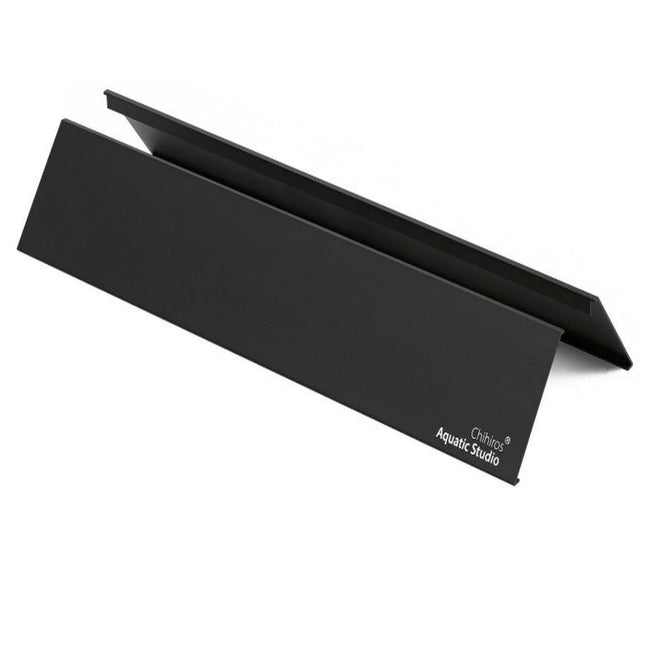
Glaze Shield for mounting at the side of VIVID 2. Chihiros Shade, functions as a light reflector that enhances downright illuminance up to approx. 15%. It is an optional part for Chihiros WRGB, WRGB II, and RGB VIVID 2 Series. It comes with 2 plates for each set.
$0.00
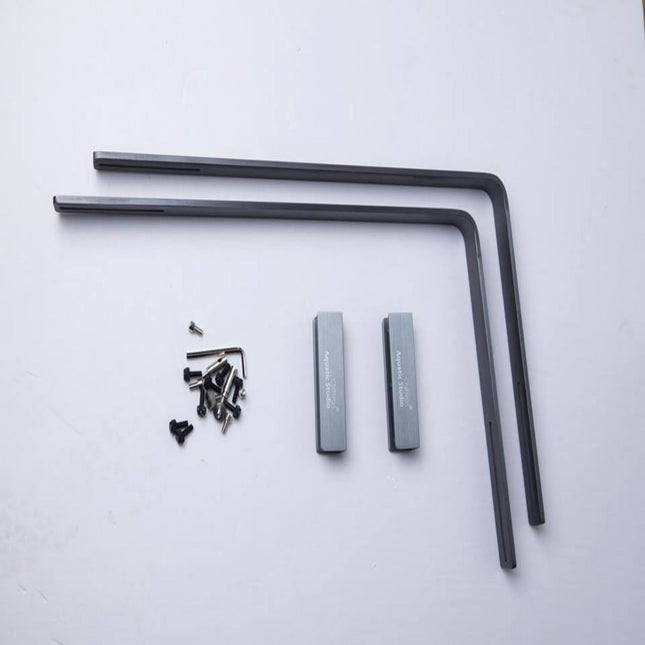
Simple and easy installation Smart design to hold the hanging rope Suitable for 60cm to 120cm length tank Alloy Aluminium material
$0.00
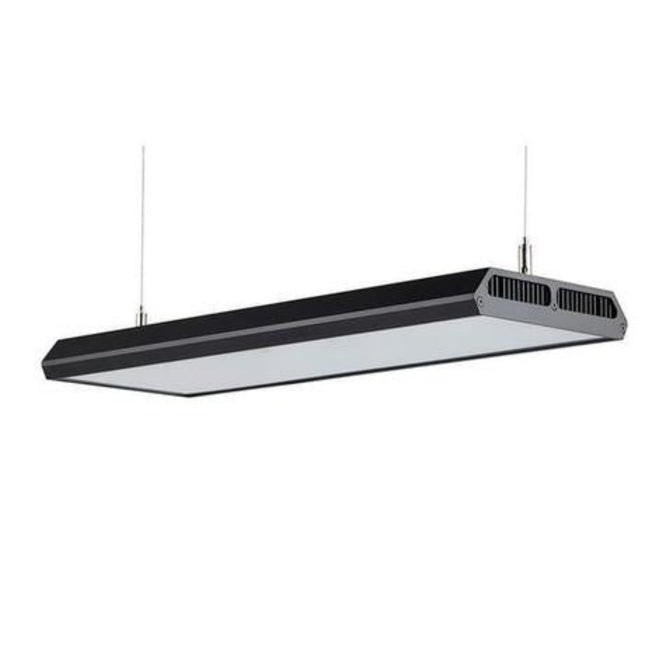
The RGB VIVID II by Chihiros is a modern LED pendant lamp for aquariums that highlights the complete colorfulness of both aquatic plants and animal inhabitants of each tank. The arrangement of the red, green, and blue LEDs in just one LED chip ensures the most natural color rendering of the light possible and optimally supports plant growth. Thanks to its brightness and light output, the lamp is also an excellent choice for densely planted tanks or for plants with special lighting requirements. With its light output, the lamp is designed for aquarium tanks with a length of 60 to 90 cm and is characterized by the long life of its LEDs. The RGB VIVID II has a preinstalled Bluetooth controller. This distinguishes it from the RGB VIVID I, which requires an external device, the Commander 4, to be programmed. The integrated controller of the VIVID II allows the lamp to be operated by "My Chihiros APP" and enables individual daily scheduled programming. Via the app settings the brightness, the color temperature, and the 3 color channels can be changed easily so that e.g. sunrise and sunset can be sim
$0.00
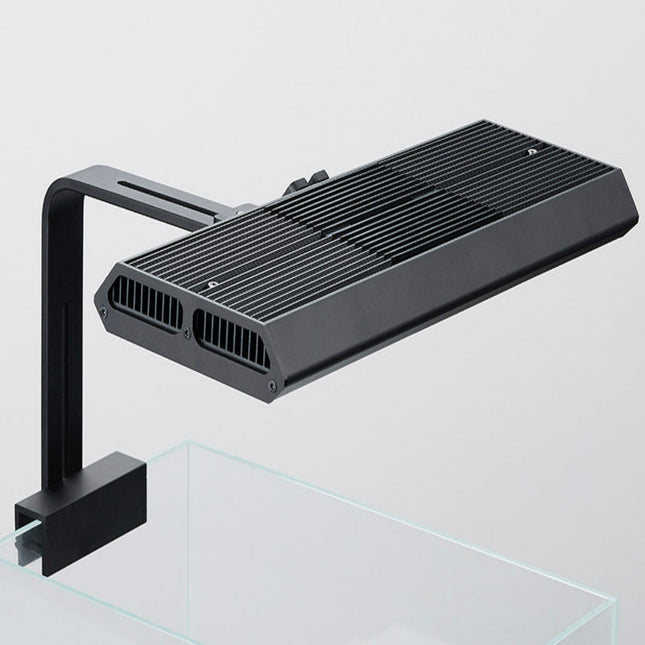
Chihiros RGB VIVID Mini is exactly a mini version of RGB Vivid II. Hence it designs for small tanks from 40cm to 60cm in length aquarium. Its lighting fixtures are more powerful and colorful. Furthermore, the design of built-in cooling fan help to dissipate heat release from the heat sink. Also, it has a built-in controller that lets you simulate the sunrise and sunset effects, customize spectrum intensity at each time point, therefore it does not require a timer installation anymore!
$0.00
You have seen 324 out of 1935 products